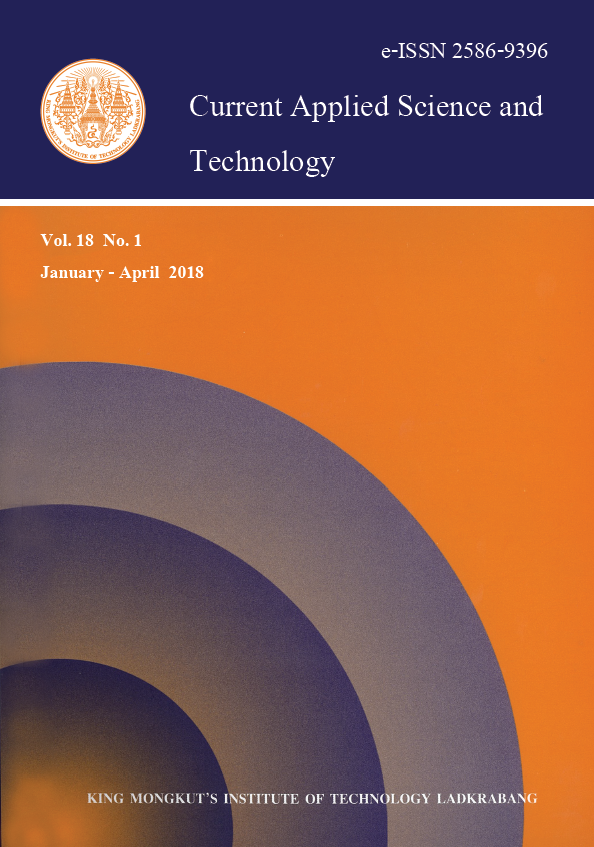Mers Model of Thai and South Korean Population
Main Article Content
Abstract
Coronavirus (MERS-Cov) caused the occurrence of Corona. First infected case was reported in 2012 during a poultry outbreak in Saudi Arabia. After that, there were the reports of the sporadic outbreaks in all regions. In this study, we considered the transmission cycle between two population groups: Thai and South Korea. Each population group was divided into susceptible, exposed, infected, quarantine and recovered groups. The behaviors of the solutions were obtained using a standard dynamical modeling method. The stability conditions for the disease free equilibrium state and disease endemic equilibrium states were determined. The basic reproductive number R0 is obtained. When R0<1, the disease-free state was locally asymptotically stable. If R0>1, the endemic equilibrium state was locally asymptotically stable. The numerical solutions were shown for supporting the theoretical results. We found that when we decreased (the rate of susceptible Thai human changes to become an exposed Thai human and (the rate at which South Korean population moved out the country), the number of coronavirus case was decreased and outburst of coronavirus epidemic was shorter.
Keywords: Basic reproductive number, mathematical models, MERS, stability, standard
dynamical modeling theorem
*Corresponding author: E-mail: kppuntan@kmitl.ac.th
Article Details
Copyright Transfer Statement
The copyright of this article is transferred to Current Applied Science and Technology journal with effect if and when the article is accepted for publication. The copyright transfer covers the exclusive right to reproduce and distribute the article, including reprints, translations, photographic reproductions, electronic form (offline, online) or any other reproductions of similar nature.
The author warrants that this contribution is original and that he/she has full power to make this grant. The author signs for and accepts responsibility for releasing this material on behalf of any and all co-authors.
Here is the link for download: Copyright transfer form.pdf
References
[2] Poletto, C., 2015. Quantifying spatiotemporal heterogeneity of MERS-CoV transmission in the Middle East region: A combined modelling approach, Model Epidem., 204, 1-9.
[3] Chowell, G., Blumberg, S., Simonsen, LK., Miller, A.M. and Viboud, C., 2014. Synthesizing data and models for the spread of MERS-CoV: Key role of index cases and hospital transmission, Epidemics, 9, 40-51.
[4] World Health Organization, 2015. Middle East respiratory syndrome coronavirus (MERS- Cov) Republic of Korean. [Online].Available at: https://www.who.int/csr/ don/12-june-2015-mers-korea/en/
[5] World Health Organization, 2016. Thailand confirms MERS-CoV in traveler, WHO cautions against continued risk of importation. [online] Available at: https:// www. searo.who.int/ mediacentre/releases/2016/1618/en/.
[6] World Health Organization, 2016. Middle East respiratory syndrome coronavirus (MERS-Cov) - Saudi Arabia. [online] Available at: https://www.who.int/csr/don/16-may-2016-mers-saudi-arabia/en/
[7] Hsieh, Y.H., 2015. 2015 Middle East Respiratory Syndrome Coronavirus (MERS-CoV) nosocomial outbreak in South Korea: Insights from Modeling, PeerJ3: e1505 https: //doi.org/10.7717/peerj.1505
[8] Department Tourism, 2016. International Tourist Arrivals to Thailand By Nationality May 2016. [online] Available at: https://www.tourism.go.th/home/details/11/221/25516
[9] Korea Tourism Organization, 2016. Statistics of Arrivals by Cruise2016. [online] Available at:https://kto.visitkorea.or.kr/eng/tourismStatics/keyFacts/KoreaMonthlyStatistics/eng/inout/crInout.kto
[10] Small, M., Tse, C.K. and Walker, D.M., 2006. Super-spreaders and the rate of transmission of the SARS virus. Physica D, 215, 146-158.
[11] Yong, B. and Owen, L., 2016. Dynamical Transmission Model of MERS-Cov in Two Areas, Application of Mathematics in Industry and Life 020010, 1-7.
[12] Leah, E.K., 1988. Mathematical Models in Biology. New York: Random House.
[13] Pongsumpun, P. and Tang, I-Ming., 2014. Dynamics of a New-strain of the H1N1 Influenza A Virus Incorporating the Effects of Repetitive Contacts, Computational and Mathematical Methods in Medicine, Article ID 487974; pp.1-9.


